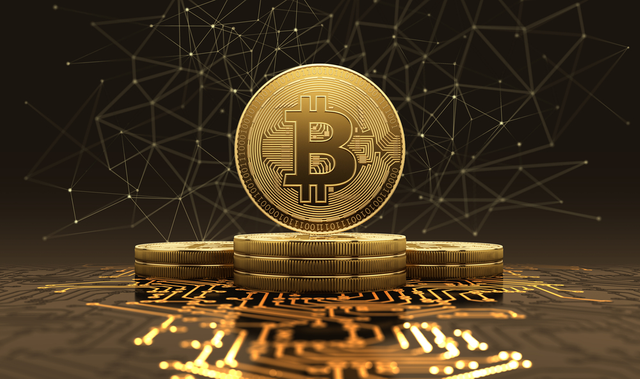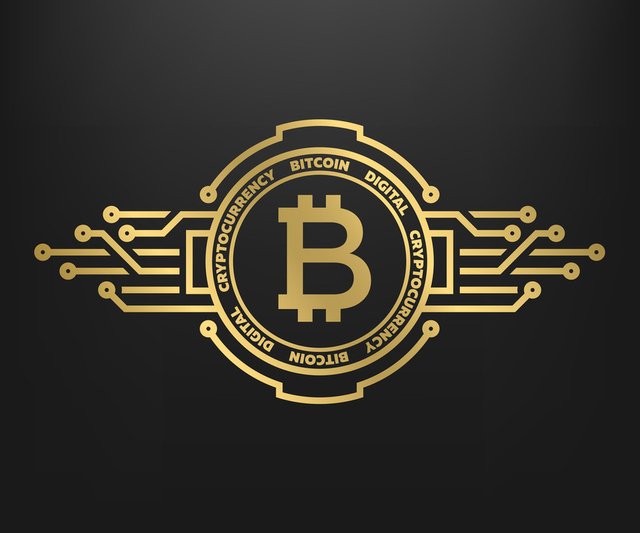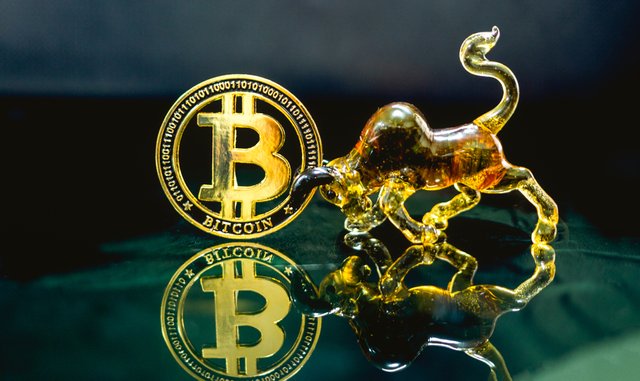What is Bitcoin (BTC)? — The Origins, Rise and Potential Future for the Original Cryptocurrency — Beginner's Guide

With the majority of focus surrounding the crypto market focused squarely on Bitcoin, it’s no surprise that its price has exploded to over $19,000 and has a market cap nearing $200bn at the time of writing.
As the most traded cryptocurrency by both volume and value, it’s quickly taken its place in 2017’s zeitgeist as the biggest point of contention in the technology and financial spheres… for good reason.
This article will examine the origins, rise and potential future for the original cryptocurrency.
Please appreciate this is not an endorsement of any financial instrument, and any views expressed herein are our own opinions and nothing more. If you are interested in getting involved with the crypto market, you need to seek the advice of a regulated financial adviser.
What is Bitcoin?

Bitcoin is a new type of exchange mechanism called “cryptocurrency”.
Created in 2009 by the mysterious Satoshi Nakamoto, it is billed as a public decentralized financial ledger.
It is a way to store financial transactions in a publicly accessible database called a blockchain. Regardless of your opinion about the cryptocurrency craze, the main thing that Bitcoin has highlighted is the increased adoption of the technology it was built on.
Blockchain is the real star of the crypto circus and is consequently why most institutional investors are finding it difficult to justify the crazy prices for the various coins — as they hold no value of their own (blockchain is the real value play).
Blockchain is basically a way to save, manage and process data saved across 100’s or 1000’s of servers around the world (nodes).
Whilst the technology has existed for over 10 years, it’s only been with the rise of Bitcoin that people have begun to take it seriously.
Released in 2008 (as an OPEN SOURCE system) (meaning anyone has access to the source code), it quickly became popular with niche groups online. It was only after the growth of Bitcoin that the mainstream started to pick up on it.
Blockchain works by storing (typically transactional) data in a database called a “chain”.
This chain essentially stores a HISTORY of the data within a series of “blocks”.
Each time a new block is added to a chain, the blockchain system synchronizes its updated data with 100’s or even 1000’s of other servers. This is the killer feature, as it means you’re able to create decentralized applications which can create and edit data irrespective of geographic location & local regulation.
The point of this is that with it, data is able to be stored in a much secure, transparent and accessible way. Businesses can harness data they never knew they had access to, and general members of the public can take advantage of applications built around to access the data.
In regards where Bitcoin fits in with this, you need to appreciate that blockchain was built around it being a publicly accessible system.
To secure private data in its various databases, the creator of Bitcoin created what became known as crypto (cryptographic) currency. This would provide an encryption algorithm to lock all the data kept in particular blockchain databases, and provide decryption tokens (coins) to unlock the data at varying points.
To keep people interested in pushing the currency, the creator developed an incentive for users to earn coins by using their CPU/GPU to process hashes for the blockchain database. If successful, the operation would be rewarded with as many as 50 Bitcoins.
Where did Bitcoin come from?

Bitcoin emerged in 2009 after the creator — the unknown Satoshi Nakamoto — mined the first Bitcoin. What became known as the genesis block, for a reward of 50 bitcoins, the coin validated the theories espoused by the whitepaper released the previous year.
Curiously, the following text was included in the metadata of the first coin:
The Times 03/Jan/2009 Chancellor on brink of second bailout for banks.
Much of the Bitcoin story is shrouded in mystery mainly due to the way in which the creator of the currency has remained anonymous ever since it was created.
In August 2008, the domain name bitcoin.org was registered; in November later that year, a link to a paper authored by Satoshi Nakamoto titled Bitcoin: A Peer-to-Peer Electronic Cash System was posted to a mailing list dedicated to cryptography.
Shortly after, Nakomoto released the originally Bitcoin software and subsequently disappeared after mining around 1 million bitcoins.
Whilst the technology underlying Bitcoin is undoubtedly interesting, the mystery surrounding the creator, and the continued conjecture as to how the system & its network can be maintained effectively, has become a major burden on the currency’s ability to be accepted as a form of exchange.
Ultimately, the Bitcoin idea has been floating around for some time (with another paper being released prior to Bitcoin, called bit gold). Although the way it’s grown has been astronomic, the problem for most people seems to lie in the various vulnerabilities discovered in the underlying source code and also the way in which the network has had trouble scaling, etc.
Why is it worth so much?

Disregarding the hype surrounding its price, the underlying value of the system as both a piece of software and means of exchange is pronounced.
As mentioned in the original Bitcoin whitepaper, the point of Bitcoin was to be a…
A purely peer-to-peer version of electronic cash which would allow online payments to be sent directly from one party to another without going through a financial institution.
Digital signatures provide part of the solution, but the main benefits are lost if a trusted third party is still required to prevent double-spending. We propose a solution to the double-spending problem using a peer-to-peer network.
The original Whitepaper is available here.
The point here is that — pricing aside — the idea behind the technology is revolutionary.
Unlike previous times in history, we have the technology & infrastructure to create a truly decentralized financial transactions system, where people can send money to each other without the need for a central payment processor.
This is very important. As the capitalist world relies on financial transactions to survive, if you were able to create a system that’s independent of any third party and any government, you would be able to introduce an infrastructure layer on top of which an array of transactional applications could be built.
For example, the stock exchange would become obsolete. Visa and Mastercard wouldn’t need to exist anymore. Buying a burger in McDonald's? Just use their own McCoin and get a free drink with it. All untraceable and all in the hands of a trust-based system that cannot be manipulated or tampered with.
This idea — the premise that in the future we’ll have to be using denominations of a cryptocurrency — lies at the core of why many people think the technology behind the scenes is not just important, but actually necessary (especially in light of the quantitative easing mess in the west over the past 10 years).
The price (to most people) is justifying this vision. However, as we’ve explained before — having a great piece of technology does not mean the financials add up.
Trajectory

Since its release in 2009, bitcoin has seen the number of transactions handled by its network steadily growth. Although these started to level off in late 2017 (which most have pointed to being caused by the difficult problem), the growth of the system’s usage is actually constant.
Obviously, price is another thing entirely.
The most important thing to appreciate is the underlying premise of the Bitcoin infrastructure is not to be a currency but to be an infrastructure layer for financial transactions (basically the equivalent of VISA or Mastercard).
The idea is strongest when you consider when humanity gets a second colony (on Mars).
Instead of carrying “Earth” money, you’ll be able to take a form of cryptocurrency on your device, exchanging it for the Martian currency upon your arrival (replace Mars with China and you can also see more terrestrial applications).
This is fueling the underlying adoption of the technology, which many hope will provide people with a completely decentralized way to buy and sell products directly to other people.
The most important factor of Bitcoin (which we’re yet to see) is a central company come along to provide a layer of trust for the underlying infrastructure. When this company comes along (the equivalent of Microsoft), it could give rise to a number of decentralized products all running on the Bitcoin blockchain network — from such solutions as financial exchange mechanisms (decentralized payment gateways) to decentralized booking systems.
Whilst we’re arguably already seeing this (in the form of the myriad of ICO’s created), many people have cited that Bitcoin still lacks wider adoption due to people not trusting it. The technology works well, the only problem lies in how it’s been taken up by many illegal activities and of course it’s massive price spikes.
Originally published on my website - https://qoinbook.com.